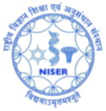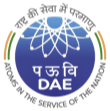Rudresh Acharya's Lab
Research Laboratory for Macromolecular Crystallography and Protein design
Research Overview
Our research group focus on understanding the structure-function-dynamics of proteins, and protein design to alter the native function. We use Biochemistry, X-ray crystallography and Compuational approaches for our study.
Proteins are workhorses of a cell, engaged in a wide range of tasks comprising structural stability, cell signaling, catalysis, transporting, molecular printing, membrane fusion, regulation, etc. Understanding the mechanism underling the functioning of these molecular gadgets is an intriguing question and defines the fundamentals of biological processes. This is an interdisciplinary research program as we set out to address the question using X-ray crystallographic methods coupled with biophysical, biochemical and computational approaches.
We are not confining ourselves to work on the structure-function of nature-made proteins. We also further engineer them via rational protein design or directed evolution to have their native functions altered for improvement/enhancement and introduce novel functions. Based on our structure-function we will also explore the dynamics, a driving force for functioning.
Our research group is pursuing the following Research Projects:
Transmembrane peptides (TM-Pep)
The polypeptide chain follows the two-stage model for folding in the membrane bilayer. The self-association of helices to achieve the folded state is the second stage of the model. It has been a daunting task to predict and model the oligomeric state of the folded state. Our research group aims for the structural characterization of the self-associating transmembrane peptides and elucidates the determinants for the self-association.
Polysaccharide Lyases (PLs)
Bacterial polysaccharide lyases catalyze the degradation of the anion polysaccharides in the host extracellular matrix and act as virulence factor. Infection ensue this process. We are exploring the structural basis for the pH dependent functioning of pathologically important polysaccharide lyases from PL-5 class. Further, we aim to engineer the proteins for improving their functioning and introduce novel functions.
De novo protein design
We are interested in de novo protein design, which aims to put our understanding of principles that define protein folding and function to the test. Here, inspired by nature, we seek to design self-assembling scaffolds that harbor tailored functions and bind co-factors to create new materials. In this scheme we have sucessfuly determined the crystal structure of previously de novo designed DFSc, the single chain due-ferri protein. The DFSc was designed by Prof. William DeGrado's group.
Two-component systems in bacteria
We are interested in determining the structures of bacterial two-component systems (Histidine kinase and its response regulator), widespread signal transducers in prokaryotes. Here, we aim to provide a structure-based mechanistic model for sensing and transmitting signals.
Funding resources


